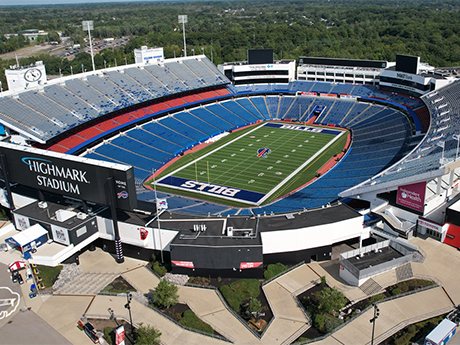By Tom Kucharski, CEO of Invest Buffalo Niagara
When Ralph Wilson selected Buffalo to be the home of the new Bills franchise in the American Football League in the 1950s, it was one of the nation’s 10 highest populated cities, making it a natural fit. However, a general shift around the country away from traditional manufacturing as a major base for economic activity, combined with a number of other factors, led to a decline in the city’s employment and population bases in the ensuing decades.
Over the past 25 years, Buffalo has reversed that trend, emerging as a city on the rise. The region recently saw its first population growth in over 70 years, according to the 2020 census. That growth has been spurred by a diversification of the local economy, attracting businesses in industries such as advanced manufacturing, food processing and life sciences. Companies were especially enticed by the region’s low cost of doing business and affordable energy supplied by the nearby Niagara River.

A key to maintaining that momentum has been Buffalo’s self-reinvestment, including massive redevelopment projects centered around reclaiming the city’s waterfront district. The first wave of these efforts began about a decade ago. Specifically, prior to 2014, Buffalo’s Canalside was surrounded by abandoned industrial facilities and gravel lots, leaving the area, which is adjacent to the downtown strip, unsightly.
The area has since been revitalized through early investments from the New York Power Authority and Empire State Development, followed by over $200 million in private funding. Today, it’s a vibrant hub of restaurants, museums, hotels, offices, parks and event spaces — a blueprint for attracting residents and sustaining growth.
Canalside remains at the forefront of transforming the entire Buffalo waterfront, breathing new life into areas that still bear the marks of its industrial past. The revitalization plans include a new home for an emerging sports franchise, modern residential towers and an outdoor amphitheater. These developments are adding fresh energy and depth to the city, propelling Buffalo’s remarkable comeback and ushering in a bold new era of growth and opportunity.
Project Details
The initiative starts with the Ralph C. Wilson Centennial Park, formerly LaSalle Park, which is undergoing a $100 million-plus transformation. The park’s redevelopment includes a new pedestrian bridge, shoreline restoration initiatives, a new parking area, new park lighting and improved park drainage and pathways, as well as a tree planting program. It’s a multi-phased approach that is completely changing the complexion of this long under-utilized urban park into a destination.
Buffalo’s Outer Harbor, which was previously the location of an inaccessible and abandoned 100,000-square-foot warehouse, received $13 million in funding to develop an amphitheater, with the capacity to host 8,000 guests for premier concerts and events. This year alone, the space will feature performers such as T-Pain, the Dropkick Murphys and the Buffalo Philharmonic Orchestra.
Buffalo Pro Soccer, an expansion franchise of the United Soccer League (USL), is also in the process of selecting a site for a stadium in the city. The venue will welcome Buffalo’s only professional soccer team when play begins next year, joining a suite of other premier sporting venues in the city, including KeyBank Center and the soon-to-be-completed Highmark Stadium.
The stadium ties into the broader theme of Buffalo as an entertainment hotspot, with additional options like OnCore’s under-construction Shot Club, a 45,000-square-foot golf driving range that also offers high quality dining all year round. In addition, Riverworks has transformed old grain silos into an entertainment building, offering a roller rink, ice rink, bar and more.
Residences are also being built in the area to take advantage of the waterfront redevelopment. Chief among them is the new Marine Drive Apartments project, a $400 million new development that will create 686 affordable housing units across eight buildings. Joining them nearby is Heritage Point at Canalside, sister towers that are under construction and will feature 61 apartment homes as well as commercial space, right in the heart of the waterfront district.
A Model for Other Cities
This continued redevelopment represents a next step in Buffalo’s growth, but only one of many. The past few decades have seen a steady stream of investments pouring into the city, attracting and building hundreds of businesses.
This activity is also providing a blueprint for other cities to similarly rewrite their stories as well. Many Rust Belt regions may recognize the same landscape Buffalo faced not long ago — neighborhoods marked by abandoned factories and industrial sites. While some may view these areas as unwelcome or insurmountable challenges, they actually represent opportunities rich with untapped potential to guide cities into the next phase of their evolution.
Thomas Kucharski has served as president and CEO of Invest Buffalo Niagara since 2000. Under his leadership, Invest Buffalo Niagara has secured more than 400 successful project wins representing $6 billion in investment in the region and more than 65,000 jobs created and/or retained.


